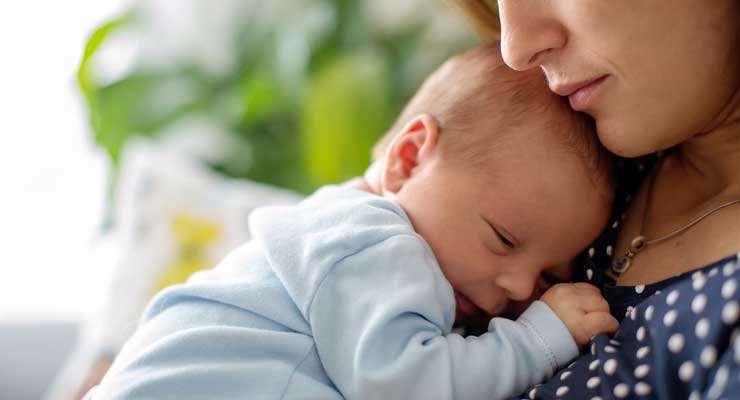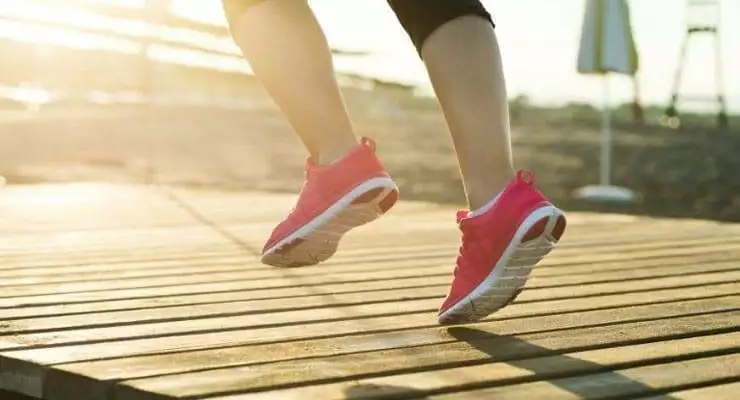What you may not know, or want to know about body after baby
“I am a post-pregnancy, gas passing, panty tinkling, flabby blob.” Okay, if we all thought that might happen after giving birth, there would be lot less pregnancies.
While it might seem like a whole lot more doom and gloom than most women experience (thank goodness), after birth can cause a few uninvited and unflattering experiences.
The good news (along with what I sincerely hope is a happy and healthy baby) is that there are actions you can take to help you move to feel better on the inside and outside. Let’s put it all out there and talk about body after baby and what you can do to help you be healthier and happier.
Gas Passing
Let’s start with the gas passing and why that can happen after delivering a baby. If you weren’t already gassy because of diet or other gastrointestinal issues before pregnancy or baby, you may find your digestive system is unbalanced or your bowel movements aren’t regular after giving birth. One thing to consider in order to help regulate your system and decrease gas is fiber.
Fiber is carbohydrates that aren’t digested in your body. Try to consume about 20 grams of fiber per day. Foods such as raspberries, cooked lentils, and almonds are packed with healthy fiber.
Everyone’s fiber needs are different, but everyone needs fiber in their diet. Take a look at the packaged foods you are eating to determine fiber content and assess how many fruits and vegetables you are eating daily. The best thing to do while trying to eat enough calories, especially for those of you breast feeding or healing from a c-section, is to eat different types of fiber foods to see what works best for you in regards to minimizing gas passing, increasing GI comfort (no bloating or gastro-pain), and helping you have regular bowel movements. I recommend Metamucil, which is the #1 doctor, pharmacist, and gastroenterologist recommended fiber brand.
To assist you in your fiber consumption, the Harvard School of Public Health gives these easy to follow tips for including fiber in your diet:
-
- Eat Fresh Fruit: Go with whole fruit instead of juice. Whole apples and whole oranges are packed with a lot more fiber and a lot fewer calories than their liquid counterparts.
- Fruit in the Morn: Break the fast with fruit. Get off to a great start by adding fruit, like berries or melon, to your breakfast every day.
- Read the Labels: Check the label for fiber-filled whole grains. Choose foods that list whole grains (like whole wheat or whole oats) as a first ingredient. Bread, cereal, crackers, and other grain foods should have at least three grams of fiber per serving.
- Eat More Beans: It’s easy to forget about beans, but they’re a great tasting and cheap source of fiber, good carbs, proteins, and other important nutrients. While for some they may be gas producing, but for others, they may help establish more regular bowel movements and be a welcome healthy addition to the diet.
- Try a new dish: Test out international recipes that use whole grains, like tabouli, whole wheat pasta, or beans, like Indian dahls.
- Lastly, drink WATER!! Fluids are such an important part of regulating our body, especially since our bodies are about 60% water. According to the Mayo Clinic, women need about nine glasses of water daily. Water helps prevent constipation and will help you get back to your regular bowel pattern, so drink away!
Stress Incontinence
You know that saying, “I laughed so hard I peed my pants”? Believe it or not, body after baby means that you may find you’re “leaking” during things like coughing, laughing, sneezing, or even walks, runs, and exercise.
This is referred to as stress incontinence and it could occur after childbirth. According to ACOG, The American Congress of Obstetricians and Gynecologists, it’s caused by the weakening of the tissues that support the bladder or the muscles of the urethra.
Stress incontinence is the most common type in younger women. Often stress incontinence can be related to weakening or stretching of the support of the pelvic organs caused by pregnancy. Diagnosing the cause can be complicated, so my first bit of advice is to never assume it is a sign of aging or a result of multiple pregnancies. Don’t just laugh about it! Below are a few helpful tips for controlling stress incontinence following giving birth:
- Speak with your healthcare provider (HCP). Sometimes there can be several reasons why this is happening. Work with your doctor to ensure an accurate diagnosis can be made. Only then can stress incontinence be managed appropriately and specifically to the cause.
- Lose weight.
- Avoid constipation.
- Limit caffeine intake.
- Seek treatment for frequent coughing.
- Stop smoking.
- Protect yourself, literally. Take a look at the Always Maxi Leak Guard Plus ® and Always Dri-Liners Plus with Odor Lock ®. These products have received the ModernMom Seal of Approval; they’re tried and tested by real moms.
Flab, Flab Go Away
Pregnancy is not a time to diet, as you want to eat healthily to help ensure the baby you are carrying is nourished properly. But did you eat more than necessary and have more weight to loose than you had hoped?
According to the American Pregnancy Association, the following is a list of what you can expect to gain:
- Baby: 7-8 pounds
- Placenta: 1-2 pounds
- Amniotic fluid: 2 pounds
- Uterus: 2 pounds
- Maternal breast tissue: 2 pounds
- Maternal blood : 4 pounds
- Fluids in maternal tissue: 4 pounds
- Maternal fat and nutrient stores: 7 pounds
Let’s get real. Bellies have been stretched and weight has been gained that you want to lose. And now that the baby has been born, you see flab in places that you hadn’t before. Not everyone is okay with this.
If you’re not happy with your newfound belly flab, changing your appearance won’t happen overnight. With the right attitude you can bounce back. Make sure you exercise and monitor your calorie consumption. Remember, if you are breastfeeding, it’s key to adhere to the recommended calories you need to ensure you are producing enough milk and staying healthy. Your HCP or breast-feeding consultant/midwife, can assist you in determining what the calorie needs are, specific to you. Also, check with your HCP to determine when you can begin exercising and what kinds of exercise you can start with and the timing for that.
Here are some ways to lose the baby weight and feel good while doing it:
- Take a baby stroll: Walking the neighborhood with your new baby is a great way to exercise and most babies really like the stroller movement. Most HCP’s encourage walking immediately after delivering, whether it was a vaginal or a C-section type of birth.
- Be Zen: Yoga or Pilates, if you can fit them into your schedule, can help you tone and strengthen your core abdominal muscles. You don’t have to join a gym or take a class, as there are lots of great exercise DVDs or cable shows that may meet your needs. In fact, check out ModernMom’s Workout Wednesday show on YouTube with Mighty Mommies Fitness founder Autumn Calabrese for videos and tips for getting back in shape after baby is here.
Have some advice or “one-liners” that you wish you someone had told to you before you had your baby? Share it with other moms in the comment section below!




